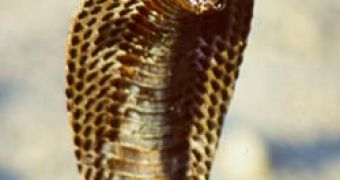50 species of snakes out of the total of India's 250 are venomous.
As if this weren't enough, researchers identified a new deadly snake in India, adding another enemy to the long-held list of four dangerous Indian snakes, made of the Indian cobra, common krait, Russell's viper and saw-scaled viper.
The hump-nosed pit viper is another one on the list of 13 Indian snakes known to present medical significance, in a recent report made by the World Health Organization's Snakebite Task Force.
12 hours after being venomed by the hump-nosed pit viper (Hypnale hypnale), related to the rattlesnakes, a patient's blood won't be able to coagulate and the patient will experience severe hemorrhage and renal failure. There is no current antivenom for this viper; moreover, it is often mistaken for a saw-scaled viper, fact that can provoke many deaths due to confusion over how to treat the bites.
For the sake of comparison, the number of venomous snake species in the US is 29, labeled as rattlesnakes, copperheads, cottonmouths and coral snakes. "Snakebites cause an estimated 50,000 fatalities annually in India but just a dozen or fewer per year in the US," said Ian Simpson, a member of the WHO Snakebite Treatment Group.
"In the last century the 'Big Four' provided an easy means to alerting people to some of the most significant snakes. Now it is outdated and proving confusing to doctors. It also curtails research into how many medically significant species there are," said Simpson, also with the Tamil Nadu Government Snakebite Task Force in India.
"Some people just refuse to accept that there are more than four and cling to outdated ideas that are decades out of date. By constantly referring to the Big Four, doctors are misled about what antivenom treatment is best for their patients. Meanwhile, antivenom manufacturers have yet to produce new concoctions to protect against snakebites other than the Big Four. Improving doctor training is a key factor for better treatment of snakebites," Simpson said.
Many textbooks in India come from Western countries and are more relevant to American species, causing unnecessary antivenom use and much confusion.
Moreover, doctors in rural clinics uninstructed in coping with snakebites refer patients to better-equipped hospitals, a risky journey that often means hours of traveling, often in a state of agony and/or shock, without antivenom. "We have developed protocols and support material to enable primary care doctors to treat snakebite with confidence. These are being implemented in a number of states in India", Simpson said.

 14 DAY TRIAL //
14 DAY TRIAL //